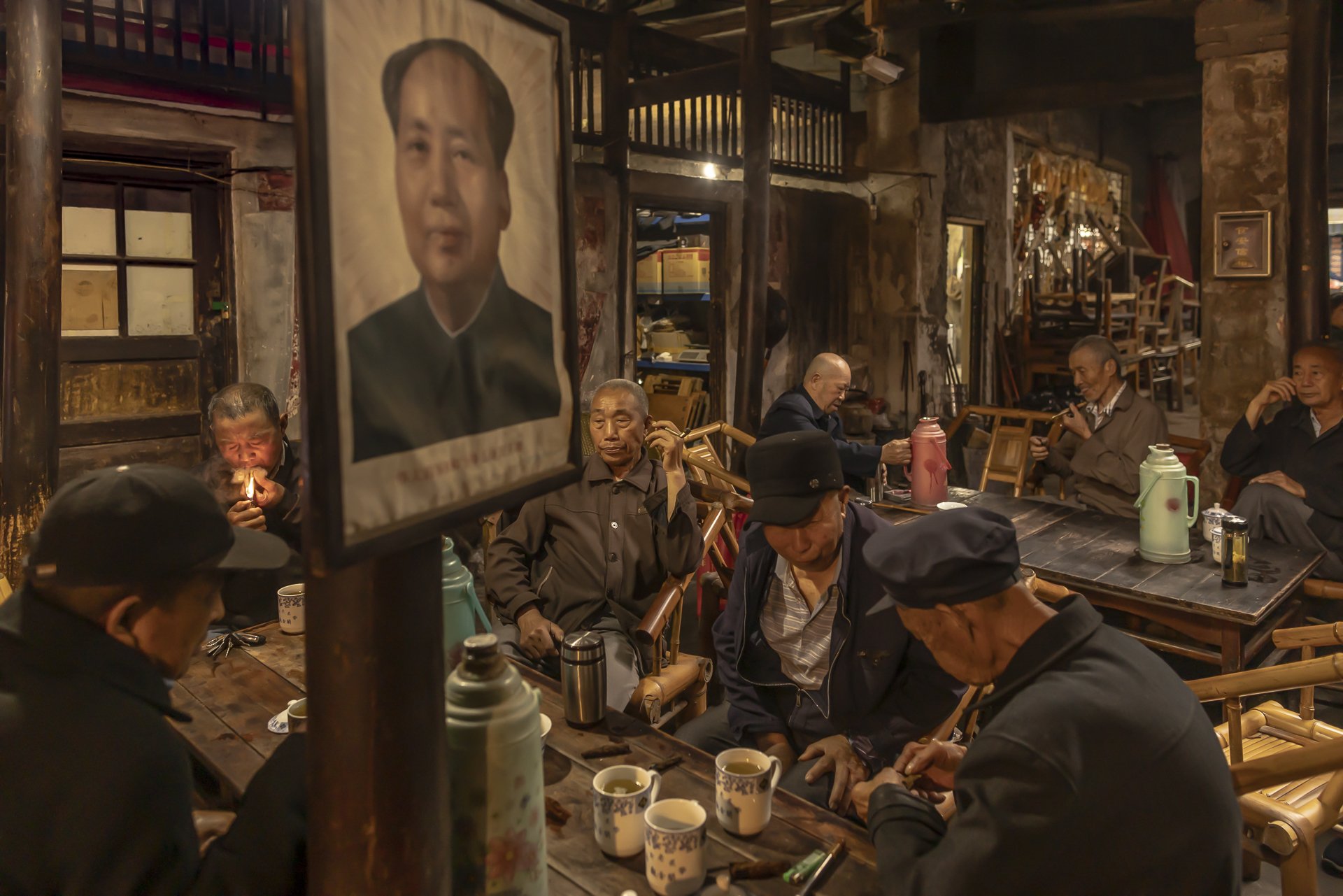 Image 1 of
Image 1 of


Mao - China
Mao Zedong hangs on nearly every wall of the Old Tea House in Pengzhen, a time capsule of Chinese history. Each morning around 6 am, elderly men fill the bamboo chairs in the Pengzhen Tea House. In this era of extreme modernity across China, this teahouse in Pengzhen village, some 20 kilometers outside of Chengdu is unchanged nor remodeled. Build in during the late-Ming Dynasty, for more than 100 years, tea has been poured into cups of workers, shopkeepers, writers, and revolutionaries. Originally the Guanyin Temple and converted into a teahouse during the Republic period of China and also used as a conference call during the Culture Revolution, no one knows how old Pengzhen Tea House is—some say more than 300 years. First managed by the village, Li Quiang and his family have owned the old tea house since the early 1990s.
Mao Zedong hangs on nearly every wall of the Old Tea House in Pengzhen, a time capsule of Chinese history. Each morning around 6 am, elderly men fill the bamboo chairs in the Pengzhen Tea House. In this era of extreme modernity across China, this teahouse in Pengzhen village, some 20 kilometers outside of Chengdu is unchanged nor remodeled. Build in during the late-Ming Dynasty, for more than 100 years, tea has been poured into cups of workers, shopkeepers, writers, and revolutionaries. Originally the Guanyin Temple and converted into a teahouse during the Republic period of China and also used as a conference call during the Culture Revolution, no one knows how old Pengzhen Tea House is—some say more than 300 years. First managed by the village, Li Quiang and his family have owned the old tea house since the early 1990s.
Mao Zedong hangs on nearly every wall of the Old Tea House in Pengzhen, a time capsule of Chinese history. Each morning around 6 am, elderly men fill the bamboo chairs in the Pengzhen Tea House. In this era of extreme modernity across China, this teahouse in Pengzhen village, some 20 kilometers outside of Chengdu is unchanged nor remodeled. Build in during the late-Ming Dynasty, for more than 100 years, tea has been poured into cups of workers, shopkeepers, writers, and revolutionaries. Originally the Guanyin Temple and converted into a teahouse during the Republic period of China and also used as a conference call during the Culture Revolution, no one knows how old Pengzhen Tea House is—some say more than 300 years. First managed by the village, Li Quiang and his family have owned the old tea house since the early 1990s.